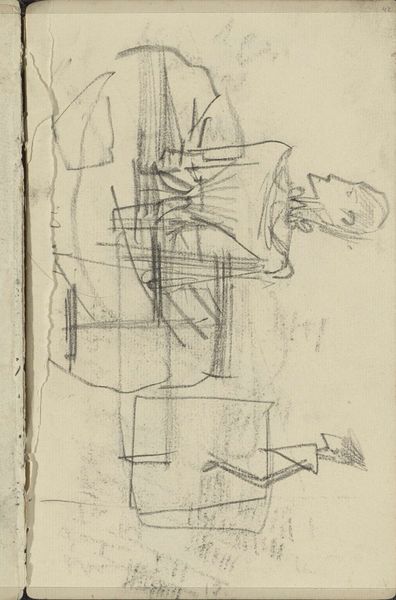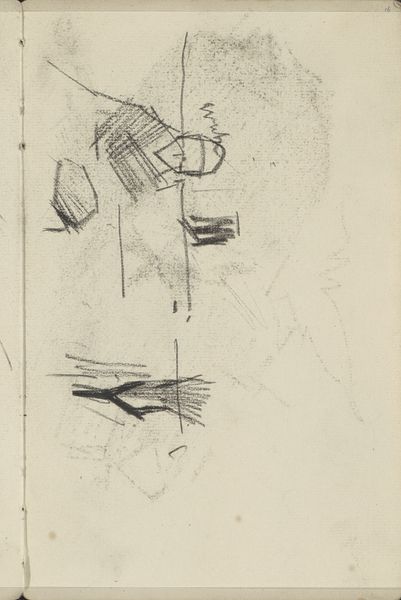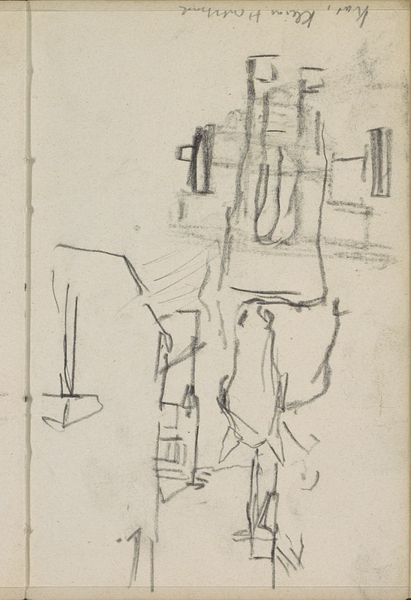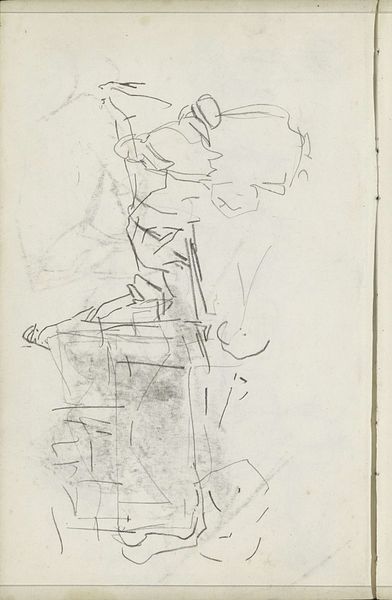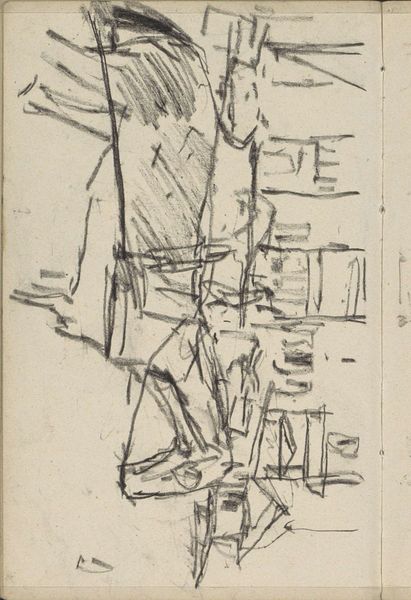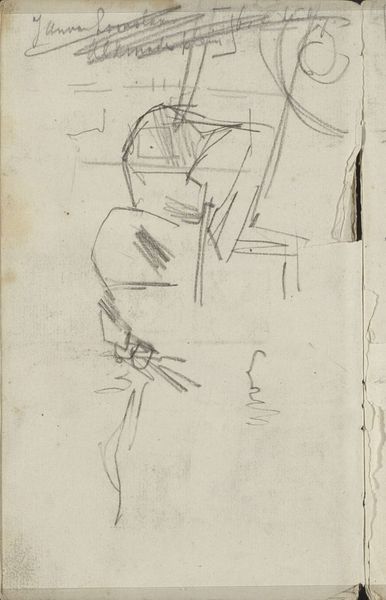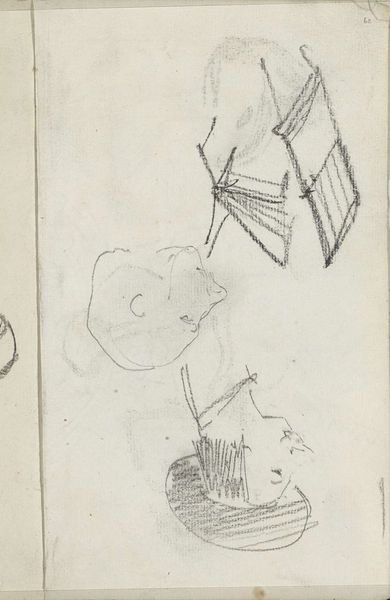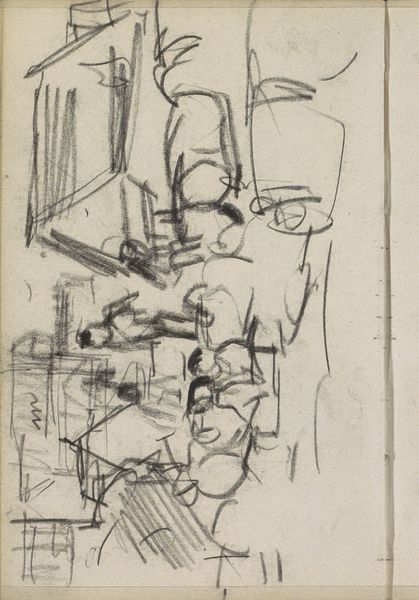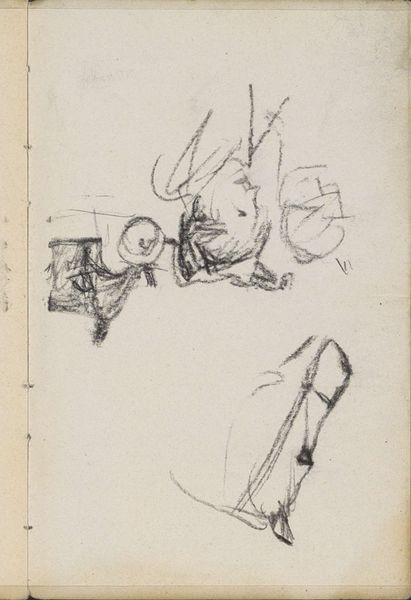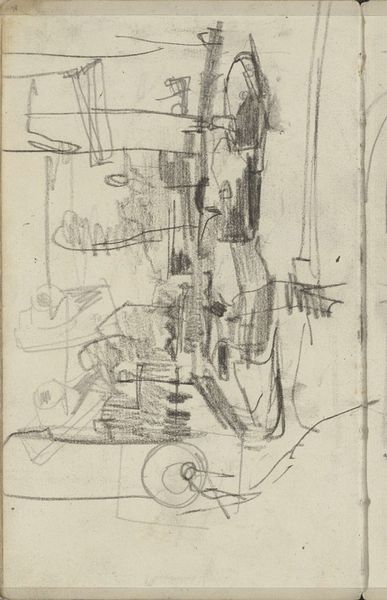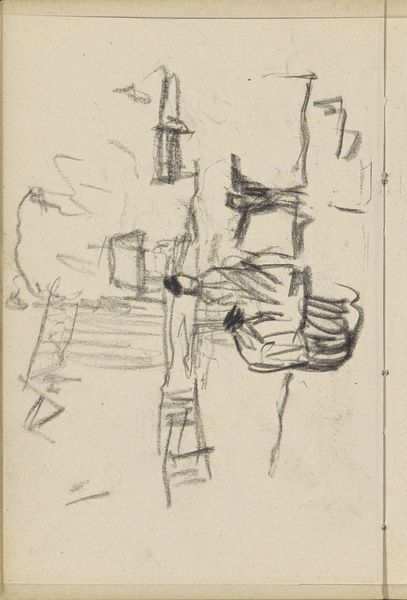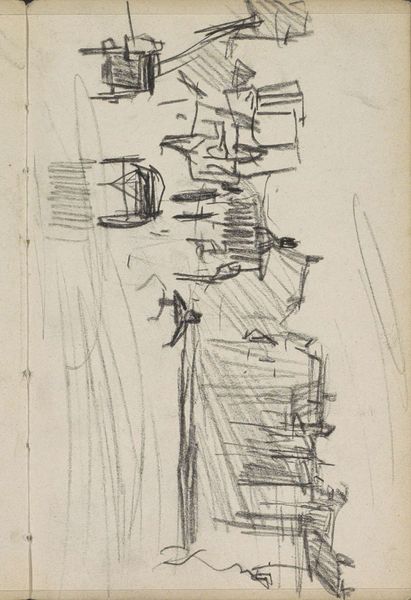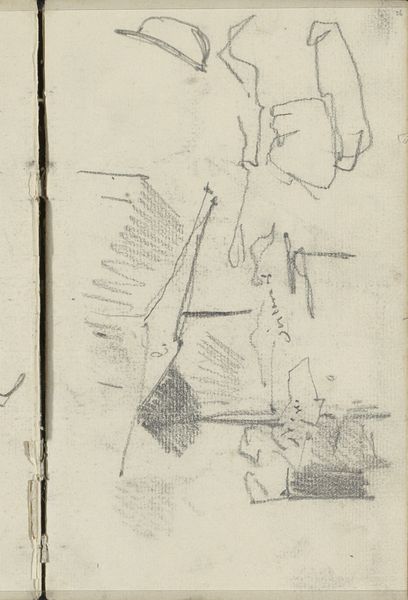
Copyright: Rijks Museum: Open Domain
Curator: At first glance, this artwork unsettles. A tangle of lines, hesitant marks, a suggestion of depth without clarity. There’s a brooding quality to it. Editor: You've touched upon its most striking feature. This is George Hendrik Breitner's "View of a Street or Square in Amsterdam," crafted between 1886 and 1908, using graphite and pencil. Breitner was deeply engaged in capturing the raw, unfiltered reality of city life. This piece is a part of the Rijksmuseum collection, offering insight into the artist’s working process. Curator: Knowing its Amsterdam helps anchor the chaos, though I still sense ambiguity in it. Are those buildings, vehicles, people? The forms are fleeting, like impressions rather than solid structures. The street takes on a symbolic role of something impermanent, or that's always morphing and in movement. Editor: I think you are onto something here: this technique positions Breitner as an integral part of the Impressionist movement, documenting his lived experience, albeit from a gritty perspective. The sketch's ephemeral quality mirrors the rapidly changing urban environment, marked by industrialization and modernization, reflective of his social context. Curator: It is also fascinating how such rudimentary strokes manage to transmit not just an idea of a space but a definite mood! Breitner uses a visual vocabulary of immediacy. What does this immediacy evoke in Amsterdam's urban identity, at the time? Editor: It challenges romantic portrayals of the city that were common at the time. Instead, we're presented with a more democratized view, revealing the ordinary life of Amsterdamers – its grit, pace, and unadorned realities that had previously been conveniently avoided, and now, presented in this aesthetic snapshot. Curator: Thank you! It re-frames how we look not only at urban settings but also the emotional reality within urban environments: an evolving and always emerging perspective, indeed. Editor: Precisely. It shows how an artistic exploration can turn even unfinished imagery into a lens for analyzing the cultural and social implications of change.
Comments
No comments
Be the first to comment and join the conversation on the ultimate creative platform.
